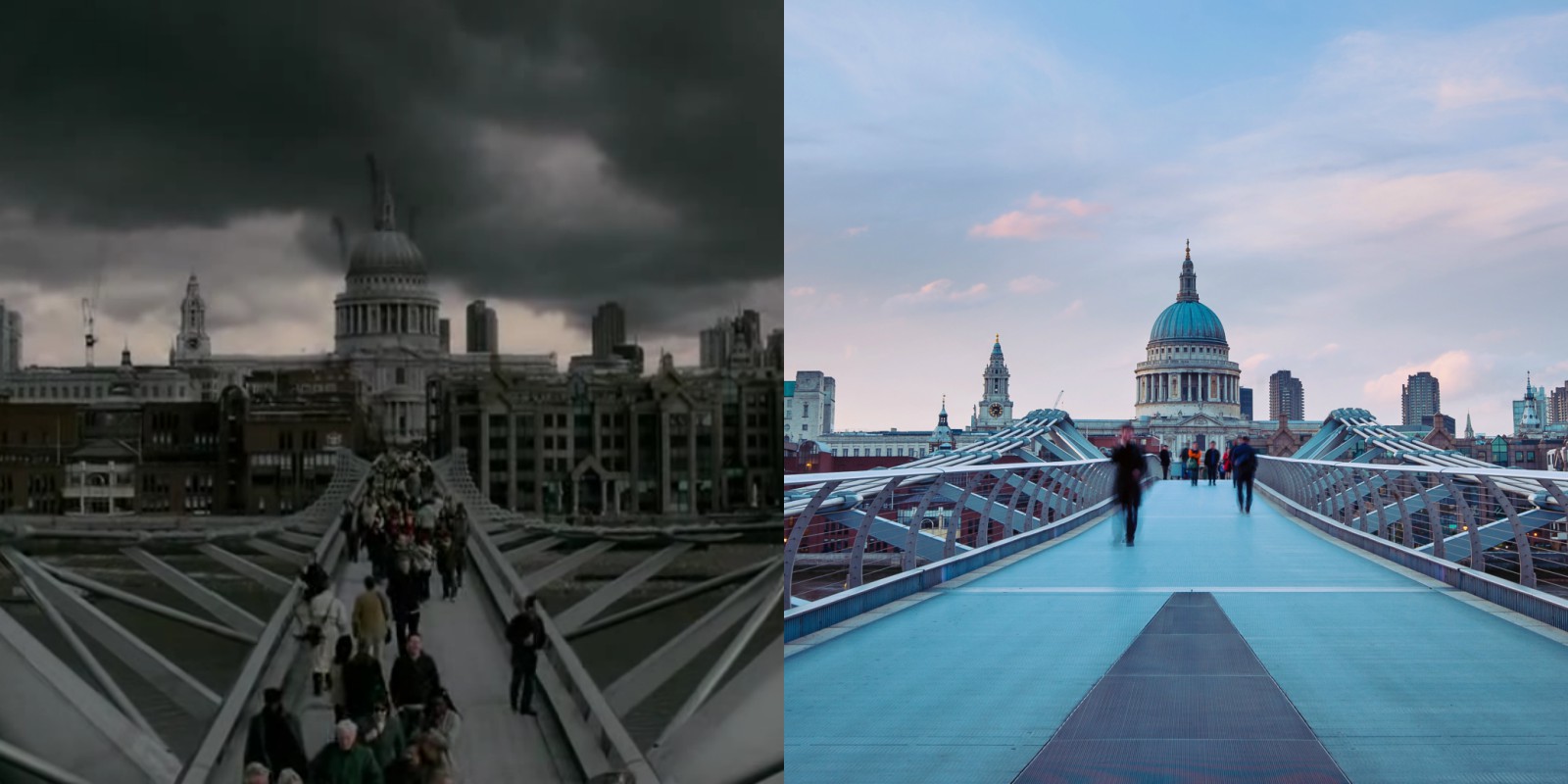The Harry Potter film franchise is known for utilising some the UK’s most iconic landscapes and buildings.
Often, though, buildings have been heavily edited beyond recognition for a more wizardly feel and locations are hard to place.
Fortunately, the Visit Britain Shop has created a map for Potter fans showing exactly where they can be found in England and Scotland.
The map is also interactive - clicking on each location will tell you which movie(s) they featured in, a specific shot from the films a fact about the location and how to get there.
We rounded up some of the most beautiful and recognisable locations on the list to see how they compared to their real-life counterparts.
We've arranged the locations below in order of appearance in the films.
London's famous Leadenhall Market takes the place of Diagon Alley in "Harry Potter and the Philosopher's Stone".

Situated between Bank and Tower Hill, Leadenhall is one of London's oldest markets.

Alnwick Castle in Harry Potter provides the exterior shots for Hogwarts, though, as you'll see, it goes through a lot of CGI to get there.

The Northumberland castle is the 2nd largest inhabited castle in England (after Windsor) and is over 900 years old. You can visit today for £15.

Glenfinnan Viaduct in Scotland is used for the iconic scene in "Harry Potter and the Chamber of Secrets" where Harry and Ron are following the Hogwarts Express in a flying car.

Visitors wishing to take in the breathtaking views over the Viaduct can do so on journeys between Fort William and Glenfinnan — an anytime return ticket is £8.90.

Virginia Water in Surrey is used as the lake surrounding Hogwarts, over which Harry flies Buckbeak the Hippogriff during "Harry Potter and the Prisoner of Azkaban".

During World War 2 the lake was drained as it was feared its shape would be too recognisable for German bombers seeking out Windsor. Virginia Water was also used in "Robin Hood", starring Russel Crowe.

Claremont Square appears in "Harry Potter and the Order of the Phoenix" as 12 Grimmauld Place — the Black family home and expanding townhouse that stretches out of secrecy betweens its neighbours.

The plush London square used to be a reservoir until the mid-19th century, hence the mound that forms the square's epicentre.

The Millenium Bridge features briefly in "Harry Potter and the Half-Blood Prince" before death eaters arrive and send it plunging into the Thames' murky depths.

The Millenium Bridge opened to pedestrians in 2000 (obviously) but was quickly closed until 2002 to correct a swaying motion. The steel suspension bridge links walkers between the capital's Tate Modern and St Paul's Cathedral.

The grand Gloucester Cathedral is used for many of Hogwarts' internal shots, such as here in "Harry Potter and the Half Blood Prince".

Dating back to the late 7th century, the cathedral has some of the earliest evidence of medieval sports such as golf detailed in the stain glass windows. Edward II is buried here.

The picturesque Glen Coe in Scotland was used to film various scenes of the Hogwarts grounds, including Hagrid's hut.

Glen Coe also featured in the James Bond film, "Skyfall".

Malham Cove provides the dramatic backdrop for Harry and Hermione's encampment in "Harry Potter and the Deathly Hallows Part 1".

The Cove's striking limestone formation is the product of coursing meltwater from glaciers over 12,000 years ago — at the end of the last Ice Age.


